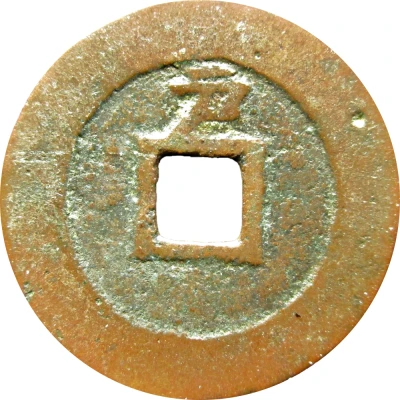


© Ollisaarinen (CC BY)
1 Cash - Chongzhen Tongbao; northern type; Hu ND
| Brass | - | 24 mm |
| Issuer | Empire of China |
|---|---|
| Emperor | Ming dynasty › Chongzhen (崇祯帝) (1627-1644) |
| Type | Standard circulation coin |
| Years | 1630-1644 |
| Value | 1 Cash |
| Currency | Cash (621-1912) |
| Composition | Brass |
| Diameter | 24 mm |
| Shape | Round with a square hole |
| Technique | Cast |
| Orientation | Medal alignment ↑↑ |
| Demonetized | Yes |
| Updated | 2024-10-04 |
| Numista | N#222615 |
|---|---|
| Rarity index | 93% |
Reverse
One Chinese ideogram above.
Script: Chinese (traditional, regular script)
Lettering: 戸
Translation:
Hu
Ministry of Works (mint)
Edge
Plain
Comment
Hartill suggests the larger, heavier coins (around 26 millimetres and weighing 1.3 Qian) were the first 1 Cash pieces produced. By 1630, coins minted in the north weighted 1.0 Qian and coins minted in the south weighed 8 Fen or less.The Northern types and the Southern types are differenciated by the left part of Zhen.
- Northern types: 礻
- Southern types: 示
DocTongDots
Interesting fact
The Chongzhen Tongbao coin was the first coinage issued by the Ming dynasty, which was established in 1630. The coin was made of brass and had a standardized design, with the inscription "Tongbao" (通寶) on one side and the reign title "Chongzhen" (崇崇禎) on the other. The use of brass for coinage was a significant change from previous dynasties, which had used copper, iron, or silver. The change to brass was likely due to the increased availability of brass and the desire to create a more durable coin that could withstand the wear and tear of circulation. The Chongzhen Tongbao coin was an important innovation in Chinese currency and played a significant role in facilitating trade and commerce during the Ming dynasty.

